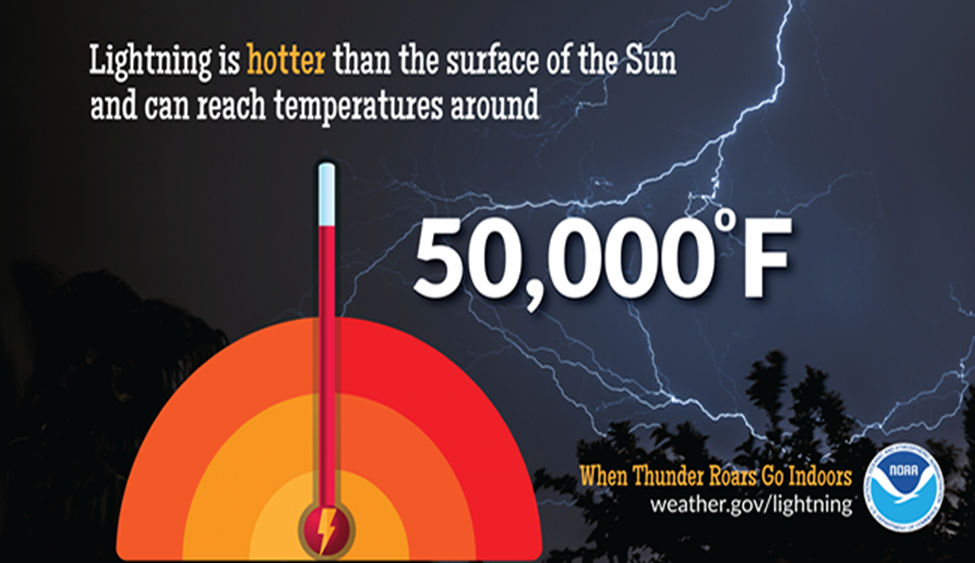Toolbox Talk - 4.14.2023 - Lightening Safety
Lightning Safety Toolbox Talk
Lightning is a dangerous natural force. In the United States, cloud-to-ground lightning occurs 20 to 25 million times and over 300 people are struck by lightning every year. When working outdoors, it’s critical to pay close attention to the weather so you are aware when thunderstorms and severe weather may occur. Being proactive is your first line of defense in keeping you and your team safe.
Here are some tips for staying safe during storms:
· If you’re caught off guard by a storm, don’t lay down or take shelter under isolated objects such as trees or equipment.
o Lightning tends to hit tall objects.
o Trees are especially prone to lightning strikes because electricity seeks the path of least resistance, and the sap and moisture inside a tree make it a great conductor.
o While metal does not attract lightning, it does conduct it so stay away from metal fences, railings, equipment, etc.
· The best places for shelter are inside a structure or a vehicle.
· Use a weather app that is capable of alerting you when a lightning strike has occurred nearby.
Here are some myths about lightning:
1. Myth: If you’re caught outside during a thunderstorm, you should crouch down to reduce your risk of being struck by lightning.
Fact: Crouching doesn’t make you any safer. Run to a substantial building or a hard topped vehicle for protection.
2. Myth: Lightning never strikes the same place twice.
Fact: Lightning often strikes in the same area especially if it’s a tall, pointy, isolated object. The empire state building is struck by lightning an average of 23 times a year.
3. Myth: If it’s not raining or there aren’t any clouds overhead, you’re safe from lightning.
Fact: Lightning can strike more than three miles from the center of the thunderstorm. “Bolts from the blue” can strike 10-15 miles from the center of the storm.
4. Myth: If you are trapped outside and there is lightning, you should lay flat on the ground.
Fact: Lying flat increases your chance of being injured by potentially deadly ground current. If you are caught outside during a storm, keep moving until you reach a safe shelter.
5. Myth: If you touch someone who has been struck by lightning, you’ll be electrocuted.
Fact: The human body does not hold or store electricity. It is safe to touch a lightning strike victim to help them and give them first aid. While you are helping the victim be aware of the continued threat for lightning and move yourself and the victim to a safe location as soon as possible.

So far in 2023, the National Weather Service has reported 0 lightning fatalities. Let’s do our part to keep it that way!
